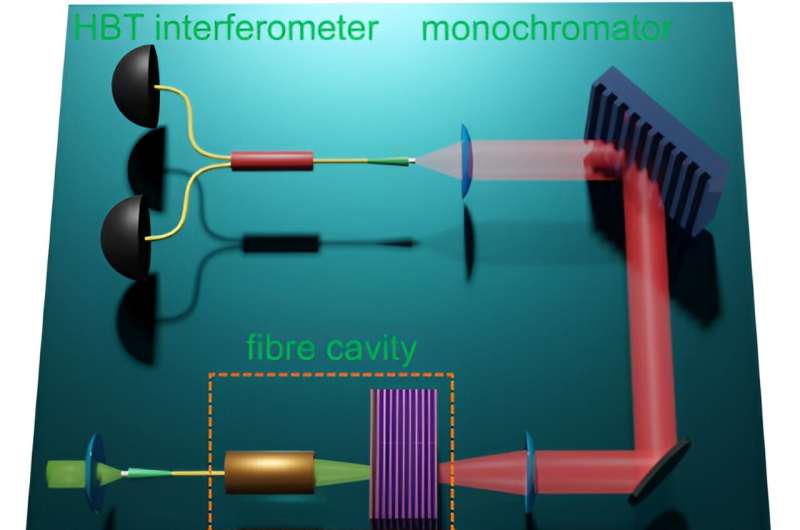This article has been reviewed according to Science X's editorial process and policies. Editors have highlighted the following attributes while ensuring the content's credibility:
fact-checked
peer-reviewed publication
trusted source
proofread
New quantum optics technique sheds light on polariton interactions

An international collaboration, led by Macquarie University scientists, has introduced a new quantum optics technique that can provide unprecedented access to the fundamental properties of light-matter interactions in semiconductors.
The research, published Jan. 15 in the journal Nature Physics, uses a novel spectroscopic technique to explore interactions between photons and electrons at the quantum scale.
Professor Thomas Volz, co-author of the study and research group leader at Macquarie University's School of Mathematical and Physical Sciences, says the work has the potential to drive a breakthrough in the global quest for accessible quantum photonic technologies.
"We have developed a new technique that uses the radiative quantum cascade, where photons stored in a material journey down a ladder of energy levels generated when light and matter interact," says Professor Volz.
"This applies even when the interactions are so weak that the resulting energy levels involved were previously too close to distinguish."
This ability to peer closer into the quantum realm holds immense potential.
"By understanding how these minute light particles collaborate, we gain valuable insights into the quantum properties of solid materials, such as semiconductors," Professor Volz says.
The team's technique, which they dubbed "photon-cascade correlation spectroscopy," combines spectral filtering and photon-correlation analysis to reveal interactions between semiconductor exciton-polaritons, which are quasi-particles made up of both photons (light) and matter (excitons).
Co-author Dr. Lorenzo Scarpelli, former postdoctoral fellow at Macquarie University and now postdoctoral researcher at Delft University of Technology in the Netherlands, says, "Photon-cascade correlation spectroscopy operates a little bit like a microscope for photons.
"We create an image-in-time of the photons, and this tells us if they tend to travel together or not, and also allows us to extract information about the strength of their interaction."
He says that the team's new technique enabled them to detect interactions that involved complex bound states of three or more particles, which had previously only been theorized.
This finding is important in quantum optics because it enables scientists to directly excite and measure specific single-photon transitions, allowing them to characterize subtle few-particle quantum effects in solid-state systems and identify materials that could work well in new applications.
"There's a worldwide search to find materials that allow us to control how light particles interact, so we can build optical transistors, very fast optical switches, and do information processing with single particles of light rather than with electrons," says Professor Volz.
"The hosting material of our experiments is gallium arsenide, but the technique can be easily applied to other materials as well, where we can expect to see similar physics effects or behavior.
"This technique will allow us to gain valuable insights into the quantum properties of solid materials."
More information: Lorenzo Scarpelli et al, Probing many-body correlations using quantum-cascade correlation spectroscopy, Nature Physics (2024). DOI: 10.1038/s41567-023-02322-x
Journal information: Nature Physics
Provided by Macquarie University




















